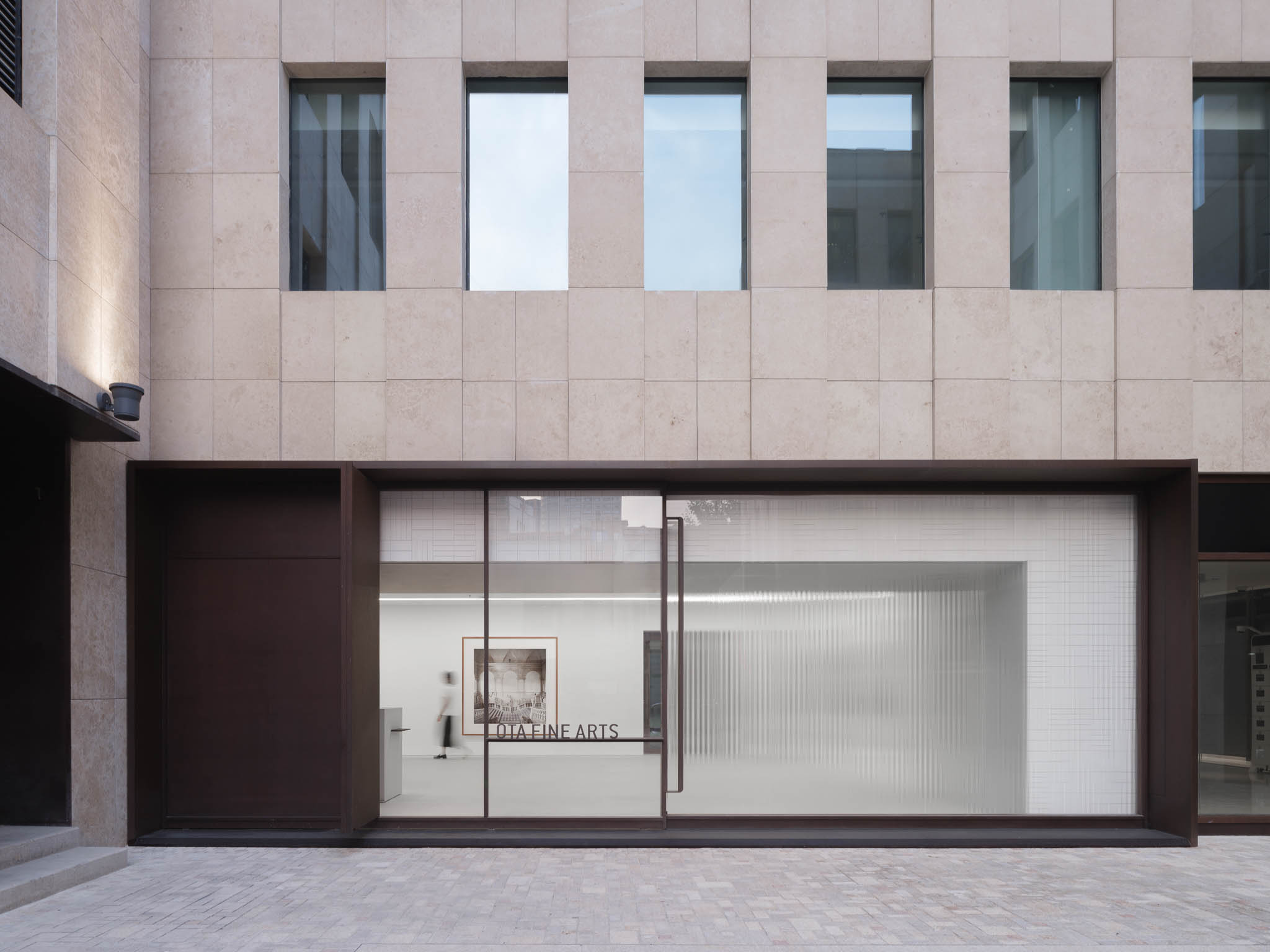
Ota Fine Arts Shanghai: Exploring Neri&Hu’s Latest Gallery Design
In the dynamic realm of fine arts, tradition crosses paths with avant-garde expression. Here, Ota Fine Arts Shanghai emerges as a beacon of innovation. Crafted by the visionary minds at Neri&Hu, this art gallery does far more than just exhibit art. It elevates it to a whole new plane.
Since its origin in 1994, Ota Fine Arts has championed East Asian artists, with a distinct focus on Japanese contemporary art. The gallery’s latest iteration, nestled in the historical yet forward-looking Shanghai district of Rockbund, is in keeping to the area’s evolution.

Architectural Alchemy
The rebirth of the 350 square meter ground floor space within a cosmopolitan mixed-use tower is Neri&Hu’s thoughtful reimagining of a space that dialogues with its surroundings. The gallery embraces the eclecticism of Rockbund, an area known for melding of historic edifices with modern designs.
The art gallery’s façade is a medley of aged steel and expansive glass panels. They elegantly frame the historic Yuanmingyuan Road from within while displaying select art pieces from the outside. It is a curated encounter with the past, speaking to Shanghai’s contemporary spirit.
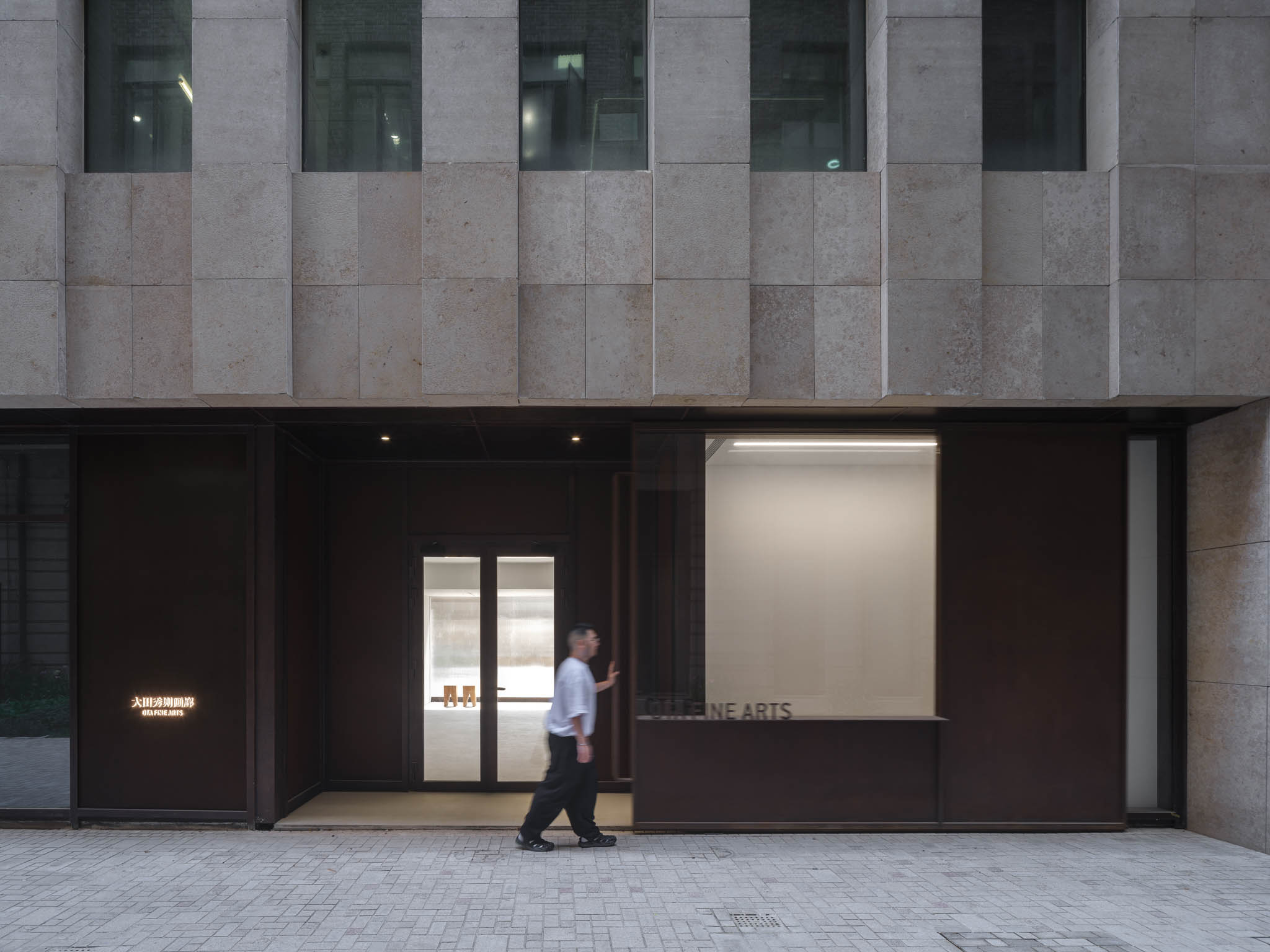
The oversized sliding door serves as a grand invitation to the world of fine arts. It opens to reveal a recessed niche, transitioning the visitor from the busy streets to a haven of artistic reflection. Conversely, when the gallery is closed, the door slides back. This transforms the space into a visual narrative that continues to engage with passersby.
Practical Aesthetics
The west side of Ota Fine Arts is a juxtaposition in itself. A fluted glass façade emits a warm glow within the Rockbund courtyard at dusk. The wide door is a feature as practical as it is aesthetic. It speaks of the gallery’s readiness to welcome large-scale artwork.

Inside, the gallery forks into two distinct zones. The main public viewing area spans into a vast 150 sqm canvas for exhibitions. The adjacent area houses more private VIP rooms and offices. Here, the design challenge was evident: to blend storage and display harmoniously along the façade. Neri&Hu’s solution blurs the boundaries between utility and experience, creating a layered threshold that narrates the visitor’s journey.
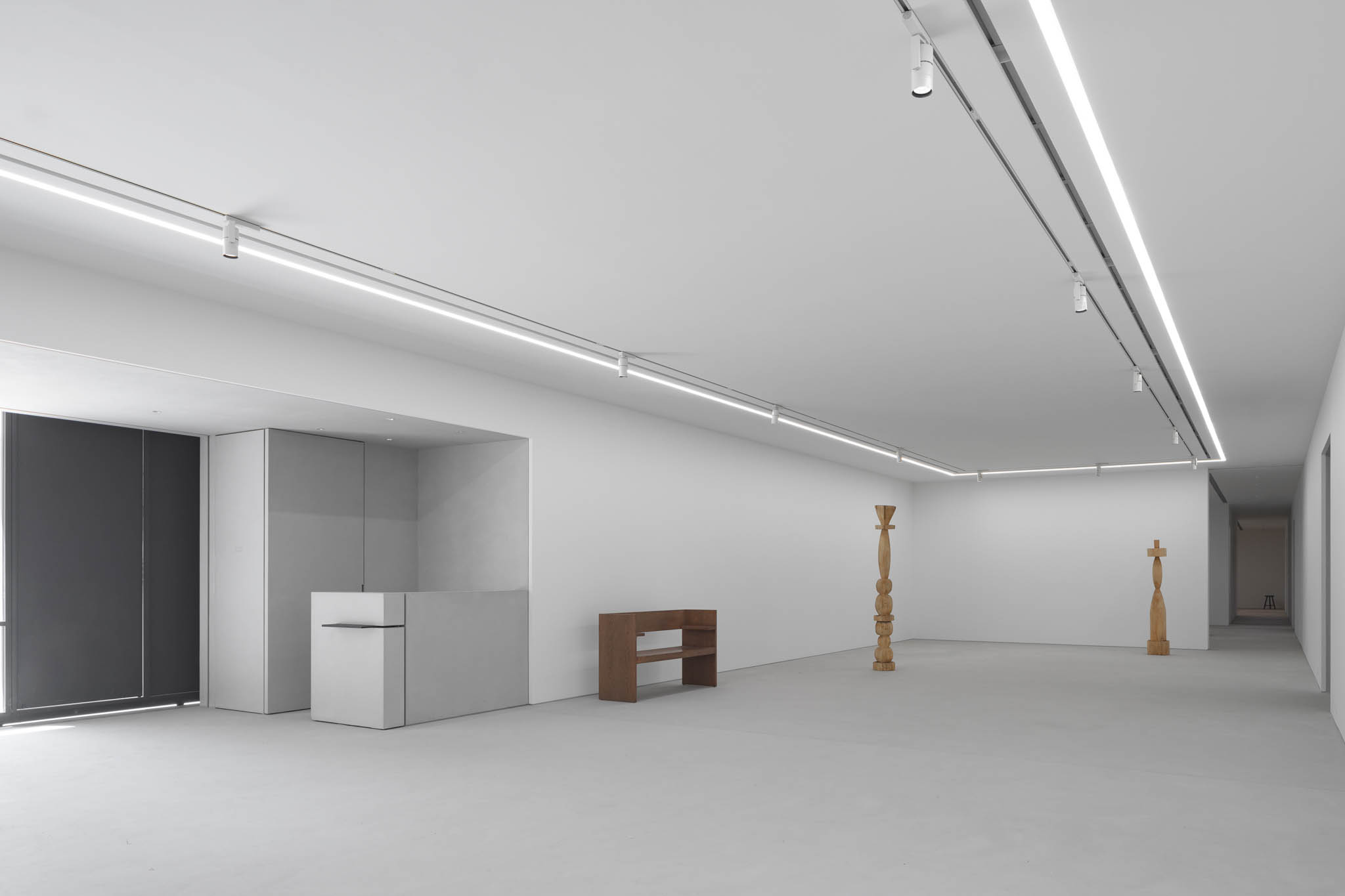
The VIP rooms are pristine, minimalistic spaces adorned with contemporary furniture, establishing an intimate setting where art commands undivided attention.

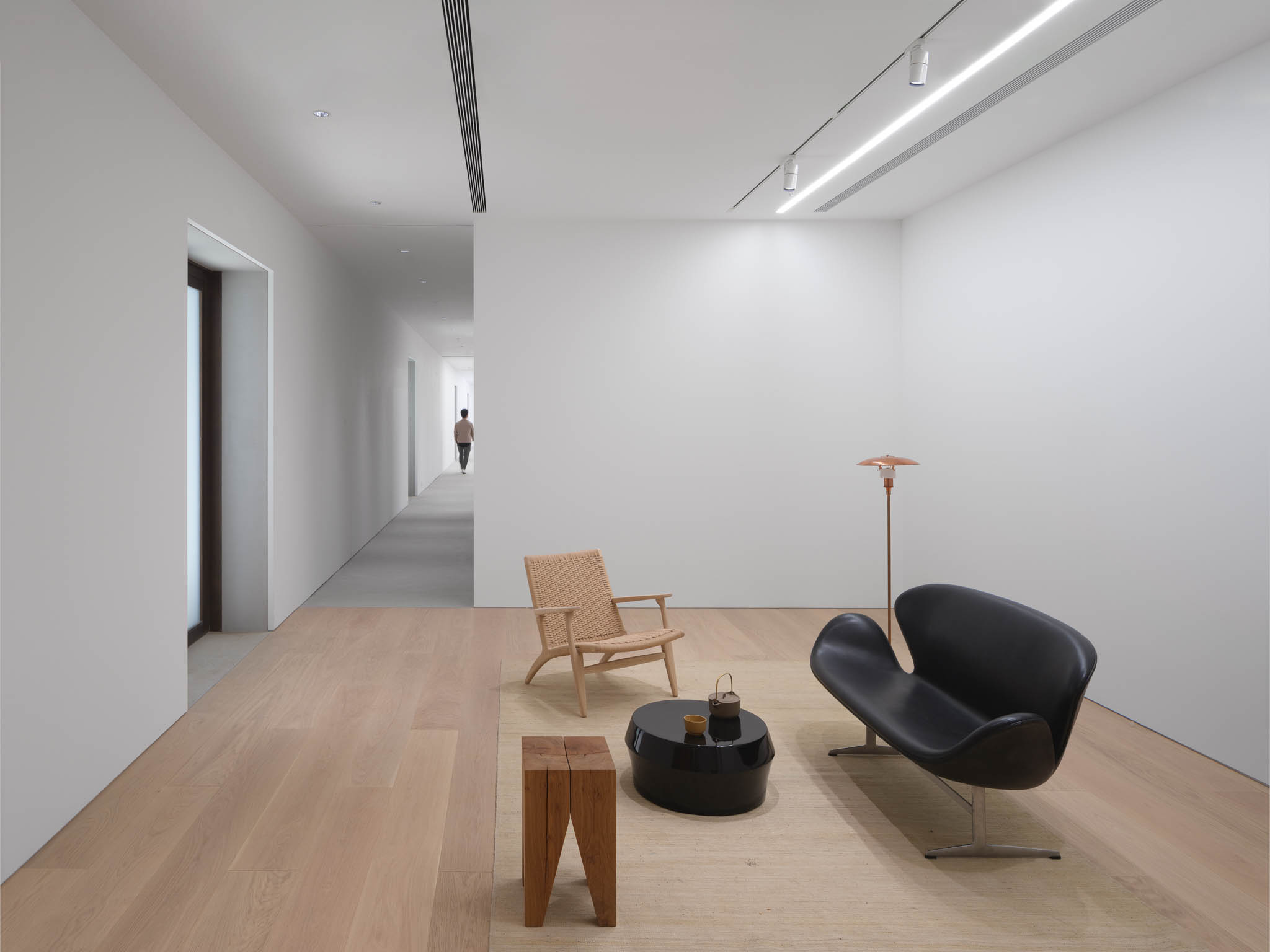
A Synergy of Contrasts: Material and Concept
Every element, from the understated material palette to the conceptual depth, underscores a balance of contrasts—old and new, raw and refined, ordinary and spectacular.
Neri&Hu’s architectural narrative for Ota Fine Arts Shanghai is one of subtlety and impact. The design ethos aligns seamlessly with the gallery’s mission: to present fine arts in a context that challenges and expands. Here, one is invited not only to appreciate the brilliance of the art on display but also to discover beauty in the mundane.
Ota Fine Arts Shanghai aims to preserve and redefine the legacy of East Asian artistry at the same time. Neri&Hu designed a sculpted environment where the fine arts can flourish and inspire within the tapestry of the city’s rich history.
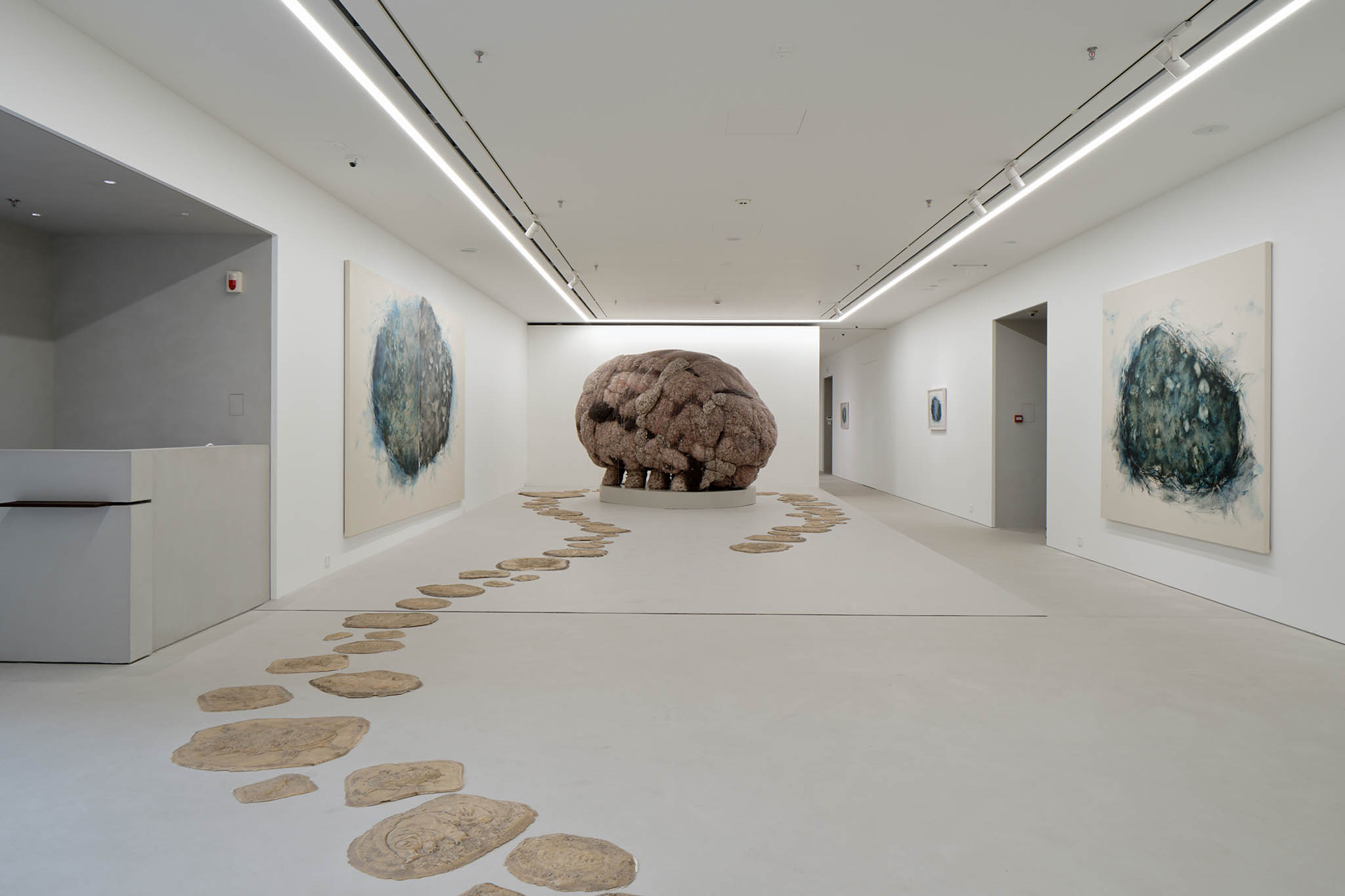
Ota Fine Arts Shanghai’s opening act, “The Uncompromising #01,” presented the curious works of Indonesian artist Ay Tjoe Christine. The exhibition presented an intricate installation from ARTJOG MMXXII, alongside paintings and paper works. The gallery’s curatorial acumen continued with “Landscaped Grounds” by Singapore’s Hilmi Johandi, who redefines spatial perceptions through his canvas.
All told, the gallery transcends a physical locale. It stands at the intersection of culture. It’s an incubator of ideas and a canvas for the art scene’s future. Ota Fine Arts Shanghai marks a new chapter in Shanghai’s artistic journey, inviting all to witness the symbiosis of fine arts and architectural ingenuity.
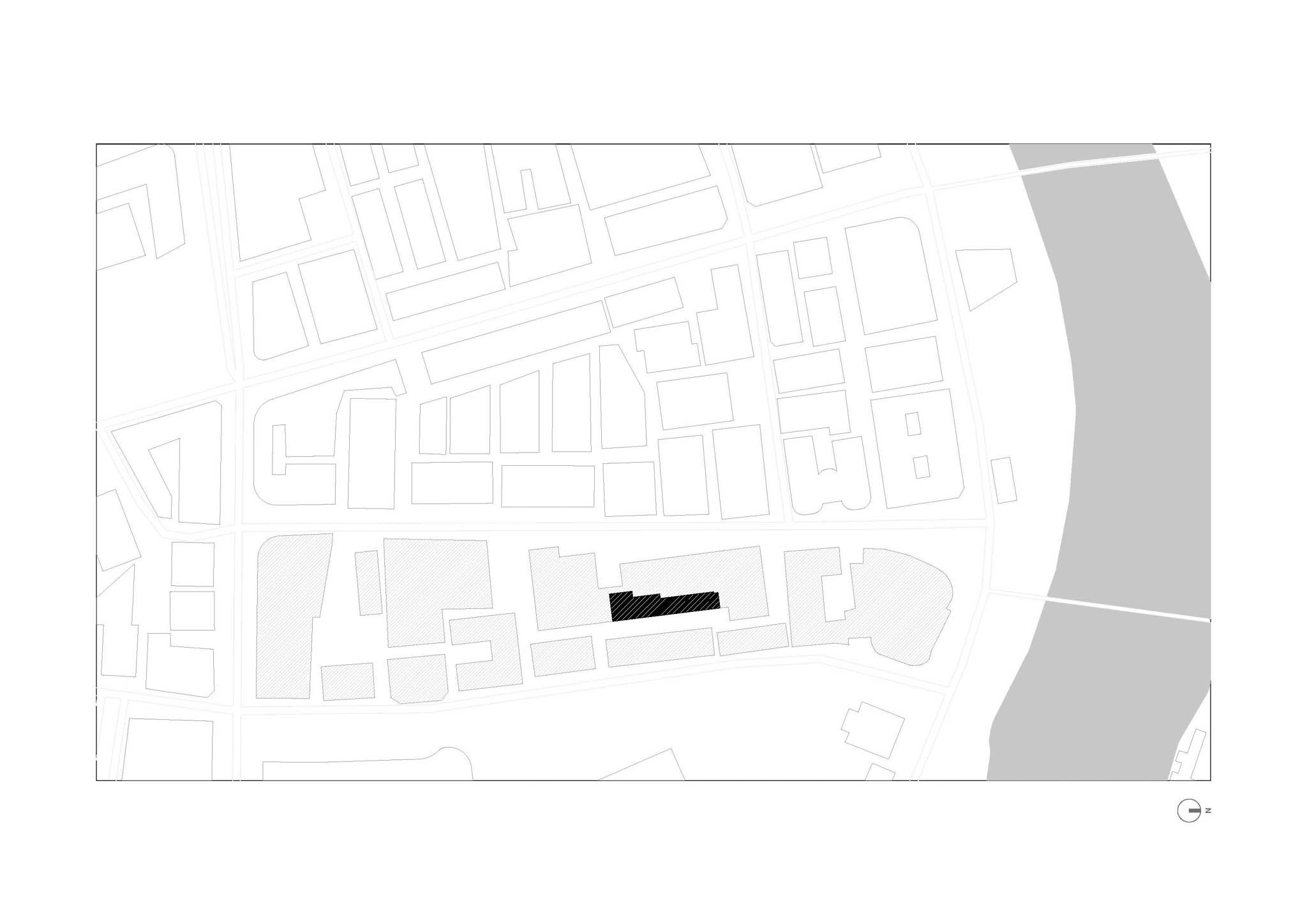
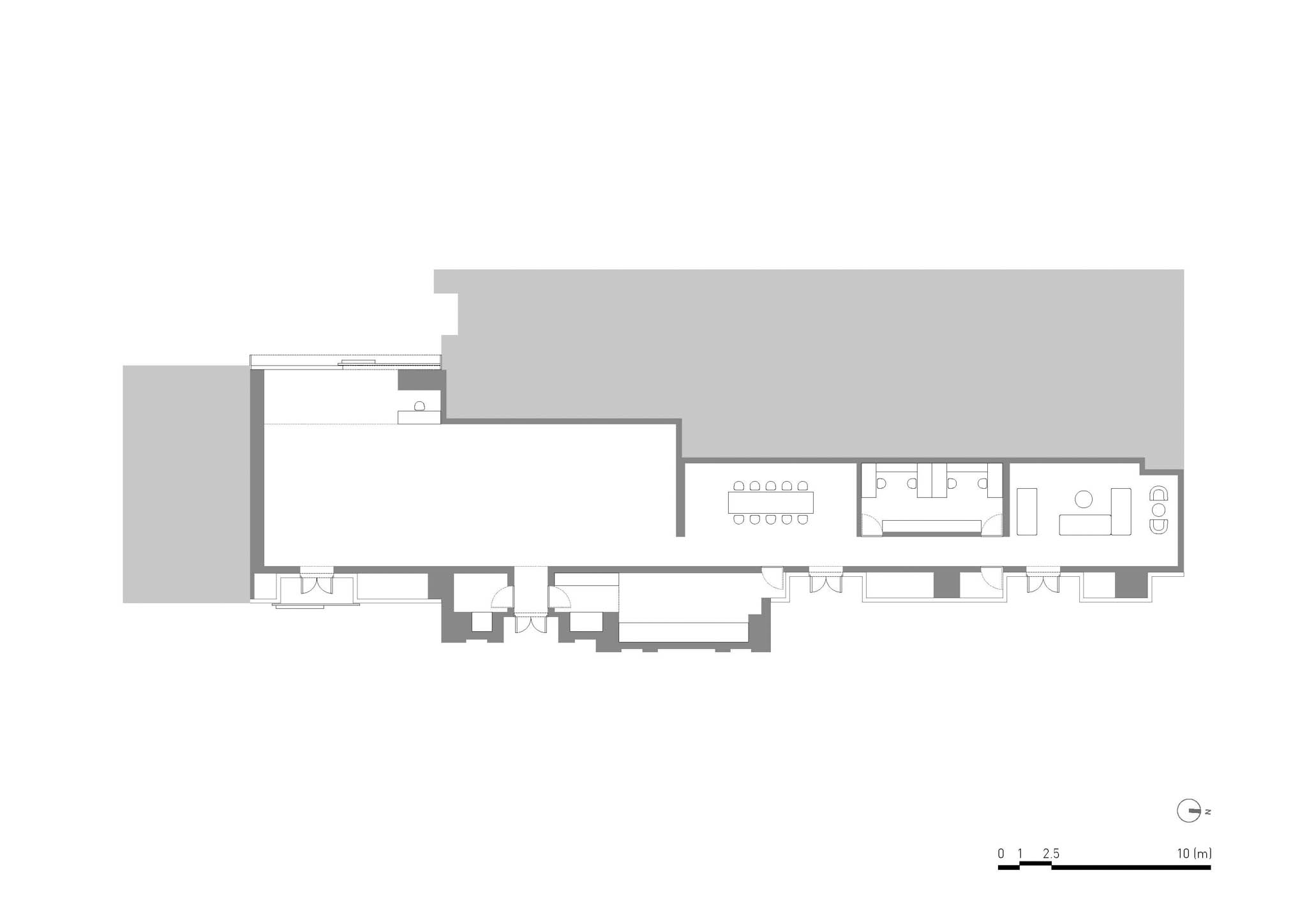
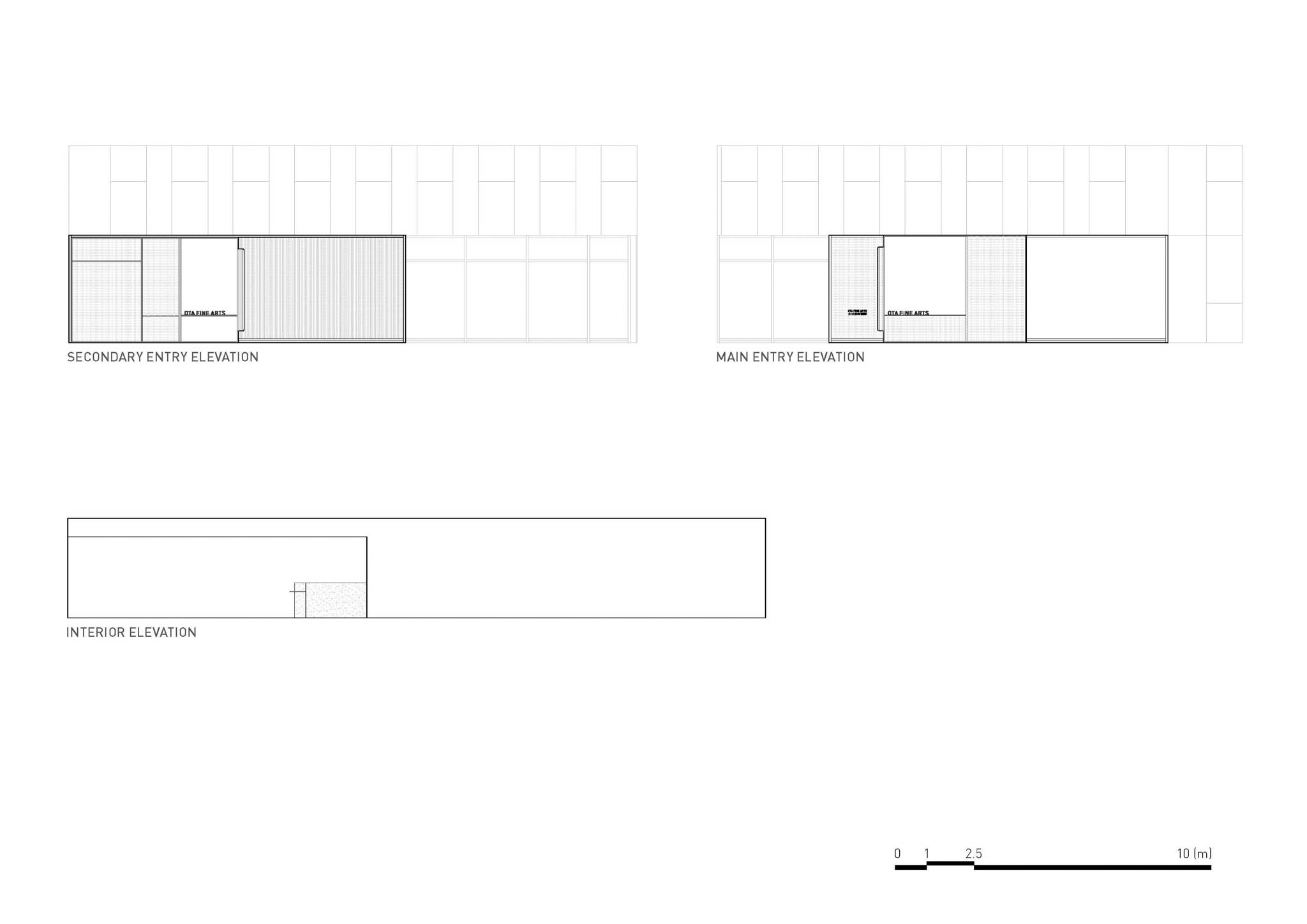
Read more:


